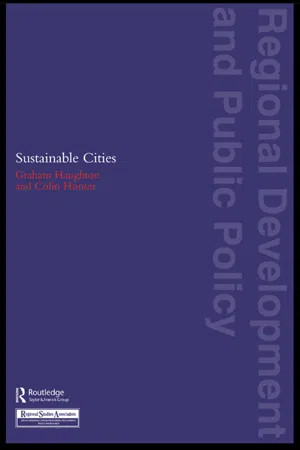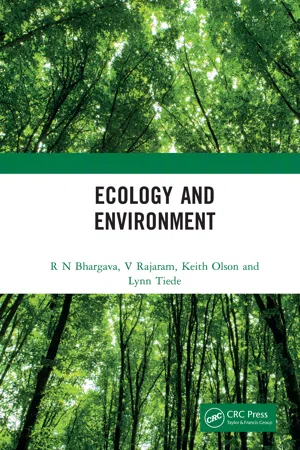Geography
Pollution
Pollution refers to the introduction of harmful substances or contaminants into the natural environment, causing adverse effects on ecosystems, human health, and well-being. It can take various forms, such as air, water, and soil pollution, and is often the result of human activities, including industrial processes, transportation, and waste disposal. Efforts to mitigate pollution involve regulation, technology, and public awareness campaigns.
Written by Perlego with AI-assistance
Related key terms
3 Key excerpts on "Pollution"
- eBook - ePub
The Environment
A Sociological Introduction
- Philip W. Sutton(Author)
- 2013(Publication Date)
- Polity(Publisher)
Alongside this, we also need to think about the issue of risk and the apparent precariousness of modern life. This is necessary because since the late twentieth century, some sociologists have argued that we are entering a period characterized by ‘risk societies’, which have to spend a good deal of their time and energy dealing with the hazards and risks generated simply by the continuing way of life that has also given the industrialized world its material wealth and relatively comfortable lifestyles. In this sense, we can ask whether the environmental ‘bads’ have started to overtake the material ‘goods’ we all took for granted.Types of PollutionPollution can be simply defined as the release of potentially harmful contaminants into the environment. However, such contaminants usually have to be released by human activity to be considered as ‘Pollution’. Gases and materials released during volcanic eruptions may well cause harm to humans and other animals, but although technically they do pollute, they are not generally described as such. Carbon dioxide emitted from the burning of fossil fuels in power plants is considered polluting even though this gas does occur naturally anyway. This being the case, Pollution is probably best seen as an inevitable aspect of the emergence of human societies. It represents the potential ‘dark side’ of human societies, population expansion and technological development. Pollution therefore cannot be avoided, though the extent of Pollution and the types of Pollution produced in societies do differ widely.We can narrow the different types of Pollution down to those that affect the air, those that affect the water and those that affect the land. However, beyond these three main types, almost anything can be considered as polluting to human societies. Householders will go to court to stop their neighbours’ noise from polluting their living-room environment with loud music, and the International Dark-Sky Association campaigns ‘to protect and preserve the night-time environment and our heritage of dark skies through quality outdoor lighting’. You may be sympathetic to the latter cause should you ever want to see the stars the way your grandparents could, but find your view obscured by the hazy orange glow of badly designed street lighting that releases as much light Pollution upwards to the sky as downwards onto pavements. There are obviously many more possible ‘pollutants’, but in this chapter we will concentrate on the three main types noted above. - eBook - ePub
- Graham Haughton, Colin Hunter(Authors)
- 2004(Publication Date)
- Routledge(Publisher)
There are a number of reasons for this focus on air and water Pollution. Air and water are clearly fundamental resources for life on Earth. The degradation of these resources via numerous forms of Pollution is, arguably, the most significant threat to the integrity of the Earth’s ecological balance and the sustainable use of its resources. It is slowly becoming accepted that human societies cannot rely on nature to provide a continuous supply of clean air and water to sustain human activities, whilst at the same time expecting these resources to absorb and neutralise the waste products of human activities cheaply and effectively. Moreover, cities, as centres of resource consumption and waste production, exert an influence over the contamination of air and water which is greatly disproportionate to their physical size. Cities are, therefore, responsible for very many air and water Pollution problems, both within and beyond urban boundaries. Furthermore, Pollution arises from many different activities (e.g. energy production, transport, industry, domestic waste disposal etc.) and as such provides a useful insight into the range of human endeavours which impact on the quality and functioning of the natural environment. Finally, the sources and effects of air and water Pollution, although very far from being fully understood and appreciated, have been widely investigated around the world. These studies have contributed to a growing disquiet concerning Pollution impacts on human health and the functioning of natural ecosystems. At present, much of the world’s Pollution is sourced in the developed countries; the North, with 25% of the world’s population, consumes 70% of the world’s energy, 75% of its metals, and 85% of its wood, whilst the citizens of developed countries also own 92% of the world’s cars (Tolba and El-Kholy 1992).THE NATURE OF Pollution
Pollutants are substances or forms of energy which cause environmental changes over and above those associated with natural background variation. A commonly-used description of Pollution stresses its anthropogenic (human-made) nature: the introduction by humans into the environment of substances or energy which may result in hazards to human health, harm to living resources and ecological systems, damage to structures or amenity, or interference with the legitimate use of the environment (Holdgate 1979). Pollution may arise when the waste products of human activities are released into the environment at a point (e.g. a sewage outfall pipe), along a line (e.g. a road), or over a particular area (e.g. a landfill site used for domestic waste).The range of pollutants commonly generated by urban activities is enormous, and encompasses forms of energy (such as excess heat, noise and radioactivity) as well as substances. A bewildering ‘cocktail’ of organic and inorganic materials is continuously emitted to air, water and soil through routine urban living. These materials may react with each other or with natural constituents in the environment to produce yet more, secondary, pollutants. A great deal of technical expertise is required to untangle the importance and effects of individual pollutants or pollutants acting in combination. However, specialist knowledge is not required to appreciate the sources and consequences of pollutants in the environment. The following two chapters aim to provide such a broad perspective. - eBook - ePub
- R N Bhargava, V Rajaram, Keith Olson, Lynn Tiede(Authors)
- 2019(Publication Date)
- CRC Press(Publisher)
Water Pollution is a major global problem that requires ongoing evaluation and revision of water resource policy at all levels (from international to individual aquifers and wells). It has been suggested that it is the leading worldwide cause of deaths and diseases and that it accounts for the deaths of more than 14,000 people daily. In addition to the acute problems of water Pollution in developing countries, industrialized countries continue to struggle with Pollution problems as well. Water is typically referred to as polluted when it is impaired by anthropogenic contaminants and either does not support human use, such as drinking, or undergoes a marked shift in its ability to support its constituent biotic communities, such as fish. Natural phenomena such as volcanoes, algae blooms, storms, and earthquakes also cause major changes in water quality and the ecological status of water.Most water pollutants are eventually carried by rivers into the oceans. In some regions of the world, studies using hydrology transport models traced the influence of pollutants up to 100 miles from the river mouth. The specific contaminants leading to Pollution in water include a wide spectrum of chemicals, pathogens, and physical or sensory changes, such as elevated temperature and discoloration. Although many of the chemicals and substances that are regulated may be naturally occurring (calcium, sodium, iron, manganese), the concentration is often the key in determining what is a natural component of water and what is a contaminant. High concentrations of naturally occurring substances can have negative impacts on aquatic flora and fauna. Oxygen-depleting substances may be natural materials, such as plant matter (leaves and grass), or man-made chemicals. Other natural and anthropogenic substances may cause turbidity (cloudiness), which blocks light and disrupts plant growth, clogging the gills of some fish species.Many of the chemical substances are toxic. Pathogens can produce waterborne diseases in human or animal hosts. Alteration of water’s physical chemistry includes acidity (change in pH), electrical conductivity, temperature, and eutrophication. Eutrophication is the increase in the concentration of chemical nutrients in an ecosystem to the extent that increases the primary productivity of the ecosystem. Depending on the degree of eutrophication, subsequent negative environmental effects such as anoxia (oxygen depletion) and severe reduction in water quality may occur, affecting fish and other animal populations.
Learn about this page
Index pages curate the most relevant extracts from our library of academic textbooks. They’ve been created using an in-house natural language model (NLM), each adding context and meaning to key research topics.


